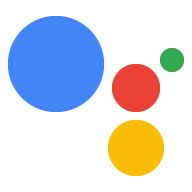برای اینکه کاربران با اکشن شما درگیر شوند، باید آن را فراخوانی کنند. در بسیاری از موارد، کاربران Action خاص شما را در ذهن دارند، بنابراین از دستیار Google میخواهند تا با آن ارتباط برقرار کند. بهعلاوه، تا زمانی که Action خود را برای انجام کارهای مفید و خاص طراحی میکنید، «دستیار» ممکن است آن را به کاربران توصیه کند که بهترین Action برای درخواست آنها باشد.
بخشهای زیر انواع مختلف فراخوانی را توضیح میدهند و نحوه بهترین طراحی Action خود را با در نظر گرفتن کشف توضیح میدهند.
انواع فراخوانی
دو نوع فراخوان عمل وجود دارد:
فراخوان صریح زمانی اتفاق میافتد که کاربران به دستیار میگویند که صریحاً میخواهند از Action شما استفاده کنند. شما بیشترین کنترل را بر نحوه فراخوانی صریح Action توسط کاربران خود دارید، اما باید به کاربران خود اطلاع دهید که چه عباراتی مکالمه را با Action شما شروع می کنند. بخش Ask Your Assistant در فهرست دایرکتوری Action شما مکان خوبی برای انتقال این اطلاعات به کاربران است.
مثال: " Hey Google، با Wayne's Bikes صحبت کن. "
فراخوان ضمنی زمانی اتفاق میافتد که «دستیار» تصمیم میگیرد که اقدام شما را بدون اینکه کاربران آن را به نام صدا کنند، فراخوانی کند. رایجترین مثال فراخوانی ضمنی زمانی است که کاربران به دستیار میگویند که میخواهند کار خاصی را انجام دهند (با بیان یک عبارت فراخوانی )، و Assistant تصمیم میگیرد که Action شما را برای آن کار فراخوانی کند زیرا میتواند هدف کاربر را برآورده کند. فراخوانی ضمنی به کاربران امکان میدهد تا با گذراندن روز خود درباره Action شما بیاموزند و از آن استفاده کنند، اما طراحی Action شما با در نظر گرفتن بهترین شیوههای ما، شانس کشف آن را افزایش میدهد.
مثال: " Hey Google، برای تعمیر دوچرخه من قراری رزرو کنید. "
عبارات فراخوانی
یک عبارت فراخوانی عملکرد خاصی از Action شما را توصیف می کند. وقتی کاربران Action شما را فراخوانی میکنند، ممکن است یک عبارت فراخوانی داشته باشند که میتواند به یکی از عملکردهای خاص Action شما پیوند عمیق بدهد.
نمونه هایی از عبارات فراخوانی عبارتند از:
- " امروز چی بپوشم "
- " اتوبوس بعدی به $location کی است "
- " قیمت فعلی طلا چقدر است "
- " میخواهم مدیتیشن کنم "
کاربران میتوانند یک عبارت فراخوانی را به انتهای یک فراخوان صریح اضافه کنند یا خودشان برای یک فراخوان ضمنی. در هر صورت، مطمئن شوید که عبارات فراخوانی مفیدی را طراحی کنید که مختص هدف Action شما باشد. عبارات فراخوانی که خیلی عمومی هستند برای کاربر مفید نیستند و دید و کشف Action شما را کاهش می دهند.
برای اطلاعات بیشتر در مورد عبارات فراخوانی، کشف و فراخوانی، فراخوان صریح و ضمنی را بخوانید.
پیوندهای دستیار
علاوه بر فراخوانی با استفاده از دستیار، میتوانید پیوند دستیار را برای هر یک از اقدامات خود فعال کنید. کاربرانی که روی این پیوند در یک مرورگر وب یا تلفن همراه کلیک میکنند به دستیار Google هدایت میشوند، جایی که مکالمه را با آن Action خاص شروع میکنند.

